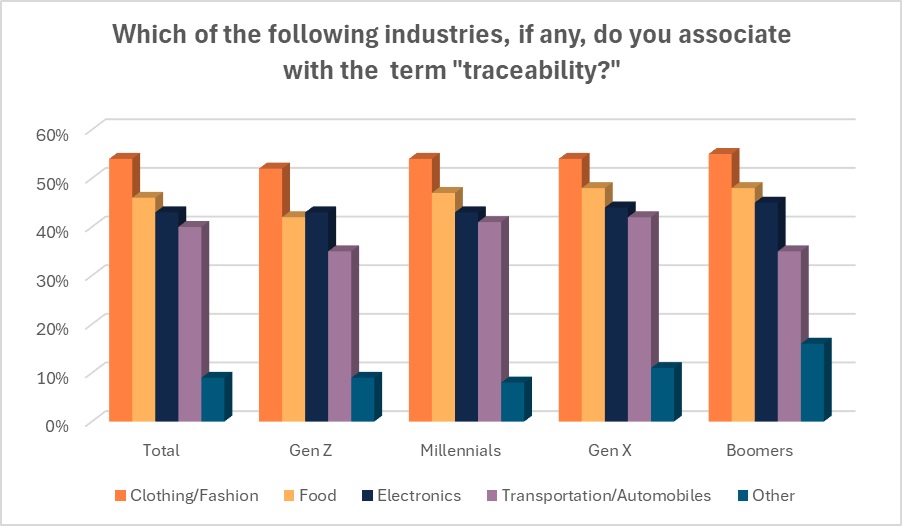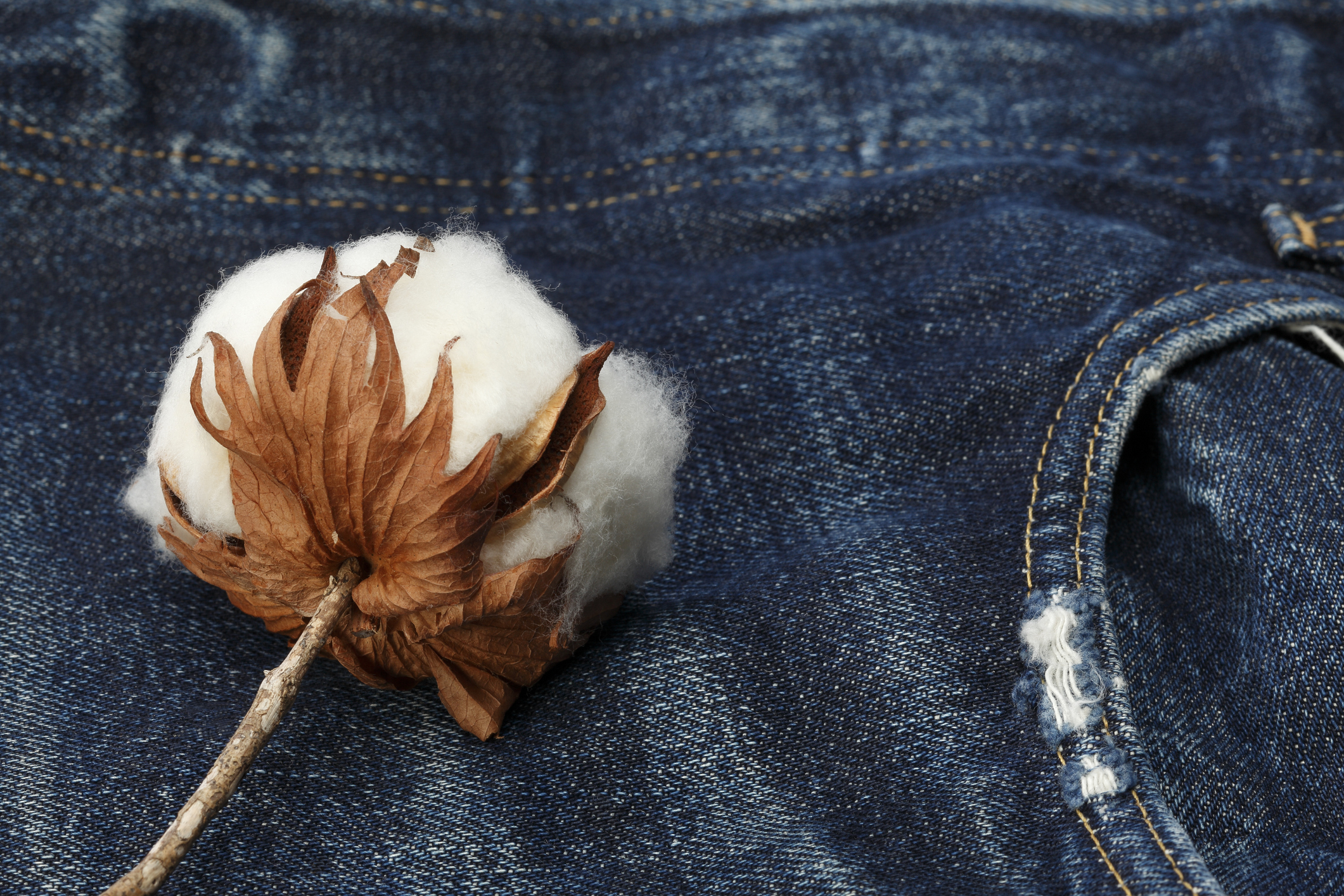The issue of sustainability has become more common among fashion consumers. And now traceability is coming into play, as shoppers place a bigger import on knowing more about what they’re buying.
An article in the World Economic Forum says transparency is “becoming increasingly important to consumers worldwide, including in the fashion industry.” The article points to traceability – the ability to know where products and their derivatives come from – as being foundational to building more sustainable supply chains. Cotton is key to the fashion industry, but consumers want to know that they’re buying the “right” cotton – and that’s where the ability to track the textile’s complex supply chain becomes paramount.
Being aware not only of where the product comes from but of the impact of that production on that specific geographical area, we need collaboration. And I think traceability is all about collaboration.
Martina Schluma, The ID Factory
Over half of consumers (54 percent) say they associate traceability with the clothing/fashion industry, according to Cotton Incorporated’s 2023 Consumer Circularity Survey. Further, more than half of all consumers (57 percent) say they have heard the term “traceability” associated with sustainability.
This association between traceability and sustainability is significant because nearly 4 in 10 consumers (37 percent) say sustainability or environmental friendliness is important to them when they are looking at which brands to buy, according to the Cotton Incorporated 2022 Lifestyle Monitor™ 4Survey. The figure jumps to 42 percent among male shoppers. Additionally, over half of consumers (62 percent) say it is important for their children to wear sustainable clothing brands, according to 2024 Monitor™ research.
But there are ways for brands to get ahead of such problems. Makers and retailers can map, trace or track suppliers, according to Martina Schluma of The ID Factory, a traceability provider, who spoke during a recent webinar, “Unlocking Traceability in Fashion: Navigating Sustainability in Supply Chain.”
“If you map the supplier, you just want to know only who is working with whom, so you’re just looking at the names of the stakeholders,” Schluma explained. “While, if you want to trace the supply chain of the product, you’re not only saying who works with who, but you’re also asking what – so you’re looking at the documents that provide you the evidence of the transaction between the parties. That methodology is the most popular one, which is the chain of custody methodology. Tracking is going beyond simply collecting documents and is actually trying to figure out a way to have real time evidence on what is happening on the production side so you can track your own production. It’s not simply having documents; you have real time evidence of what is going on. You can start from a different point, and you can start mapping beginning with the product, or you can start from the material, or you can start from the fiber. And that works with all of these approaches.”
But it’s not just about data collecting, Schluma said. Brands need to continuously review and update their value chains.
“We need to be able to track and have information available, and also provide it to the people that are buying the products, so they know where it comes from,” Schluma said. “Being aware not only of where the product comes from but of the impact of that production on that specific geographical area, we need collaboration. And I think traceability is all about collaboration.”
Nearly 8 out of 10 (78 percent) of all consumers have heard of transparency as it’s associated with sustainability, according to Cotton Incorporated’s 2023 Consumer Circularity Survey. And 58 percent of consumers have heard the term “ethical sourcing” associated with sustainability. In order to achieve better circularity, most consumers (75 percent) would like to see companies use more cotton to make apparel.

“Natural fibers, such as cotton, are essential to building our durable and reliable denim,” said Kontoor Brands’ Dhruv Agarwal, vice-president of sustainability, innovation and development in an interview with the Lifestyle Monitor™. Kontoor’s stable of brands includes Wrangler. “Our mission is to protect the land we use to ensure our cotton farmers will continue to pass down sustainable practices so they’re able to work the same lands decades down the road.
“Wrangler is a proud member of Field to Market, an alliance for sustainable agriculture that brings together a diverse group of grower organizations; agribusinesses; food, beverage, restaurant and retail companies; conservation groups; universities and public sector partners to focus on defining, measuring and advancing the sustainability of food, fiber and fuel production,” Agarwal continued. “This organization collects information from the farmers regarding their sustainability impact and shares that data with the U.S. Department of Agriculture (USDA). Over 40 years of data have been captured that demonstrate continual sustainability improvement by U.S. cotton farms.”
Some additional advances in Wrangler denim that align with the WeCare Wrangler initiative have included stretch technology and advanced comfort. To support these progressive goals, the brand recently launched the second installment of Wrangler Reborn in collaboration with Beyond Retro, repurposing upcycled denim to divert textile waste from landfills
Fashion leader Ralph Lauren, for its part, established a “Supply Chain and Product Sustainability Policy” to “set forth [Ralph Lauren Corporation’s] expectations on manufacturing practices, product and materials selection, as well as data monitoring and traceability, which are critical towards the company’s sustainability goals and objectives.” RLC has made a public commitment to source 100 percent sustainable materials for all key textiles by 2025. It has expected suppliers to show year-over-year progress on providing sustainable, traceable and verified materials to achieve its 2025 goal.
And another powerhouse brand, Levi Strauss, is collaborating with organizations like the U.S. Cotton Trust Protocol, nonprofits and farmers to create positive change. “We plan to participate in the Better Cotton Initiative’s new work to provide physical traceability of Better Cotton in an emerging program that seeks to revise the current chain of custody practices, standardize data collection, adopt innovative cotton integrity checks and meet other objectives,” the company states. “And we will keep driving on our key focus areas – sourcing fibers responsibly, engaging suppliers to address textile manufacturing impacts and using next-generation fibers that are less resource-intensive – as we continue our work to deliver more sustainable products at scale.”
Sustainability continues to be a focus for Wrangler, and the brand has prioritized weaving eco-conscious practices into its manufacturing processes, beginning with the development of the the WeCare Wrangler platform in 2019.
“The platform unites the brand’s legacy of sustainability with measurable goals designed to bring consumers the Wrangler product they know and love while also reducing the brand’s environmental impacts,” Agarwal said. “The platform was built to address three primary focus areas: doing right by people, creating less overall waste in apparel production and protecting the planet.”
